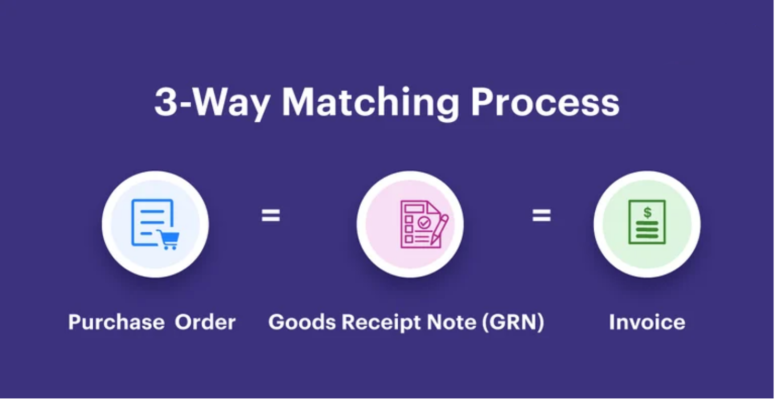What is 3-Way Matching ?
3-way matching involves verifying purchase orders (PO), goods receipt notes, and supplier invoices to reduce fraud, save money, and maintain sufficient documentation for audit trails. Typically, 3-way matching occurs before paying the supplier following delivery.
The Essence of 3-Way Matching
Three-way matching centers on confirming invoices by examining pertinent records proving that:
- The company requested the items or services for which the invoice is produced.
- The company received the goods or services the invoice points to.
This process helps quickly ascertain whether an invoice is authentic or fraudulent by confirming whether a company sought and obtained the items or services claimed for payment.
How to do a Three-Way Match ?
Three-way matching involves cross-verifying linked records to validate an invoice before payment. It sets three documents side by side to verify that an invoice reflects goods supplied or services rendered to a company. These records include:

The Invoice from the Vendor
The supplier explicitly states in the invoice the items or services provided, the amount supplied (or the time period, if relevant), the unit price of any given product, and any other pertinent information. The supplier’s invoice is essentially a demand to pay back-off debt.
The Purchase Order
Whenever someone or a department needs anything for their work, they forward a request including what they need, the amount, and the reason for their need. The purchasing department then develops this into a purchase order for the supplier, detailing the good or service they require, the quantity and quality they want, and the agreed-upon price range.
Goods Receipts Note
The receiving order notes the amount, the delivery condition, and any other relevant points suitable to remark after stating that a receiving officer has accepted the items delivered by the supplier. Once the receiving department has finished its appropriate investigation and documentation, this file is passed to the accounting section.
Before processing a payment, the accounts payable staff can cross-reference these three documents to ascertain whether an invoice from a supplier is authentic. This helps prevent dishonesty resulting from false and unjustified invoice generators.
In What Ways Could 3-Way Matching Help Your Company?
Three-way matching enables companies to verify the validity of invoices and trace their source, preventing fraud. Here are the benefits of three-way matching for your company:
Reduce Dishonesty
By reviewing an invoice alongside a purchase order and a receiving report, accounts payable staff can quickly ascertain whether it fairly reflects items and services supplied to the company or not. This helps avoid becoming a victim of either real invoices with somewhat altered figures or false invoices.
Maintaining a Certified Record of Goods and Related Costs
Three-way matching offers transparency into the relationship between a company and its suppliers and vendors, enabling a clear view of their supply to the company and the money they have received for them. This is helpful for tracing payments to a certain provider as well as for litigation if that develops.
Boost Revenues
Three-way matching shields companies from unneeded costs, which over time reduces their bottom line impact. Making a profit usually comes simpler when you are not losing money to bogus claims.
A robust audit trail tracking funds in and out of a company is essential. Three-way matching generates a strong paper trail valuable for confirming how much reasonable expenses a company has incurred.
How Could Your 3-Way Matching System Be Improved in Efficiency?
Three-way matching is essentially about preventing fraud and ensuring all incoming invoices are correctly checked before payment. While that is a great path to follow, an organization’s accounts payable staff may run into issues preventing them from performing their best work and ensuring timely payment of every supplier.
Limit 3-Way Matching to One-Time, Major Invoices
You might want to exclude recurring invoices and smaller value invoices from the 3-way matching process to streamline it. Setup allows you to check recurring payments, reducing any possibility of fraud. It’s uncommon for con artists to attempt defrauding a small-dollar microtransaction company.
Establish Adaptable Settlement Guidelines
If your 3-way matching system in accounts payable is not 100% automated, figures recorded into one of the papers could vary somewhat depending on other documents. This could hold up supplier payments and invoice settlements if you insist your calculations are exactly the same every single time.
An easy yet safe solution: If the statistics across the received invoice, purchase orders, and receiving report vary with a tiny margin of error, let authorized accounts payable staff make payments for invoices. In this sense, your accounts payable team can move forward without escalating all the way through the company when your documents—invoice, purchase order, and receiving report have matching facts with just a small variation in the figures.


